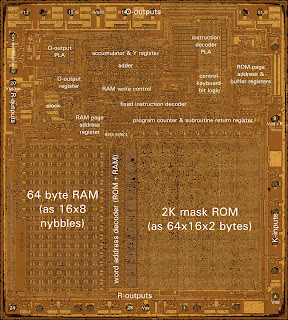Today is a little tour back to the early 1980s when Mattel released the DUNGEONS & DRAGONS Computer Labyrinth Game. [Cameron Kaiser] was dealing with a few boxes of old stuff when he came across the game. Luckily for us, he decided to do a complete teardown and a comprehensive review more than 40 years after it came out.
The game itself is pretty simple. You and a friend are characters on the board, navigating an eight-by-eight maze. As you move through the labyrinth, a microcontroller emits twelve audio cues telling you what you’ve run into (walls, doors, treasure, and so on). The eight buttons on the side allow you to hear the different tones to know what they mean, as we imagine even the most well-written manual might struggle to describe that. In addition, the pieces are diecast metal, which allows the game to detect where the pieces have been placed.
With considerable difficulty, [Cameron] opened the game to reveal a membrane keyboard pad to detect the different pieces. The actual PCB is relatively small, holding only a single 2N2222 transistor, a couple of resistors and capacitors, and one 28-pin Texas Instruments DIP. While the markings on the chip say M34012, it is a tweaked TMS1100, a descendant of the first microcontroller. It is a PMOS part, allowing it to run directly off a 9-volt battery with little to no regulation. Mattel needed something cheap and customizable to mass produce, and TI had just the design. You could hand them a ROM, an instruction decoder PLA, and an output PLA and get back a cheap little chip you could get a million of. [Cameron] has an annotated die shot based on an early TI patent and a TMS1000 die from [Sean Riddle].

The chip only has four inputs and nineteen outputs. This makes the keyboard hard to scan, but the designers worked around it by using all the inputs and all but one of the outputs to read the keyboard. The architecture of the TMS1000 is a bit strange, with only a six-bit program counter. It breaks the ROM into 16 pages and has a 4-bit address register. However, the TMS1100 has double the ROM, so it has a one-bit chapter latch for the second bank. This was no powerhouse, coming at one instruction per clock at a measly ~475kHz (roughly as it tended to drift). Overall, it is incredible how it does so much with so little.
It’s a beautiful read that takes you back to how they designed things back then. Despite all our progress over the years, we’d love to see more inventive, tactile games using microcontrollers. So while it may not be Holo Chess, this microcontroller-powered game still adds some new ideas even after all this time.
















I remember the purely verbose version of this game. My brother was studying Informatics and let me play it on the computer of the University.
In green characters every room and situation was described and the arrow keys gave way to the next room.
Proud I have had that experience!
Nice dive into the internals. Well written
Now comes the challenge: make a similar 8×8 grid based labyrinth game, but the walls come up automatically as you move the piece to a new square.
How much IO would you need to address every piece and read the input matrix as well? What sort of actuators would you use?
Actual moving walls would cost a fortune and be extremely prone to damage. You could use LEDs to simulate the walls pretty easily.
What would be the fun of that? I want moving walls.
Then get your friends together and make a lifesize board. The computer does the work, but command the players to move.
But that has the same point as placing the little lego pieces yourself.
I wonder if you could do something clever with PCB electromagnets, H bridges, 3d printers, a little bit of magnet, and some sort of latching mechanism?
I dunno, pinball machines have drop targets and although they certainly get damaged, they don’t seem cost-prohibitive.
I remember getting one of these when I was a kid and I really loved it. Sadly, it crapped out after a few days. I’m pretty sure I exchanged it for another one and that died,too, so I gave up. Would love to tryit again one day. I guess if any are still working now, they’ll probably last more than a few additional days!